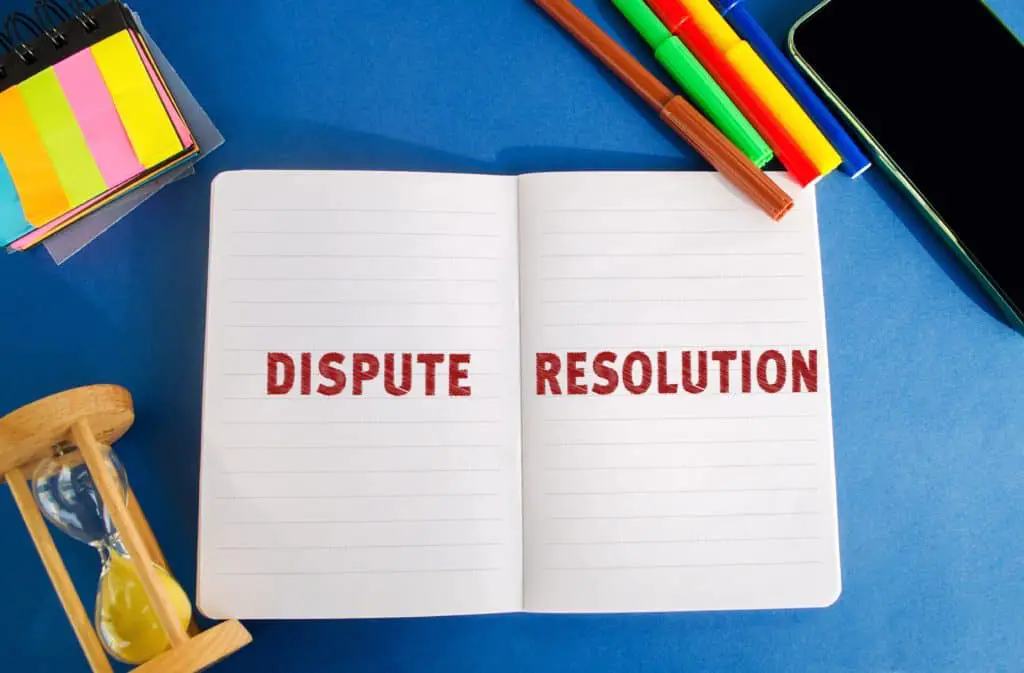How To Get Something Removed From Your Credit Report
Getting negative listings removed from your credit report is your ticket towards a DIY credit rating improvement. And while you can’t affect listings like late payments, it’s possible to remove inaccurate or incomplete information from the credit report. So, you might be wondering the following – how to get something removed from your credit report?
This guide will serve you in filling out dispute letters, steps to take to remove negative information with all three credit bureaus, and the fastest ways of getting the listings removed!
How Credit Report Disputes Work
Every one of us has had at least some slight financial difficulties and it can not only be troublesome but might also leave a mark on your credit report. According to TransUnion, at least 89 million U.S. consumers have an account in collection, not to mention late debt repayments and missed payments on utility bills.
Still, if there’s one thing that shouldn’t be on your credit report – it’s the inaccurate negative information. Think of it this way – if you don’t check your reports, and invest just an hour or two of your time in filing a dispute, your credit score might be unnecessarily low.
The Fair Credit Reporting Act ensures that you have a right to correct these false statements. It gives you the freedom to get a free copy of your annual credit report from each credit bureau.
It also goes in favor of consumer protection in terms of privacy, as you as a consumer must authorize the credit pull before the bureau can provide the information. It’s possible that lenders pulled a hard check on your credit report without you allowing it, thinking it will just be a soft inquiry.
This is where the credit file disputes kick in. Once you’ve found disputable information like this, the next step is to fill out the dispute form and send a dispute letter to the credit bureau. After that, the bureau has 30 days to conduct the research by contacting the source and informing you of the results.
First Things First – Check Your Credit Reports
Getting your free credit report annually is a recommended thing to do every year and a first step towards removing negative listings. The sad truth is that not even credit reporting agencies tend to frequently check the reports for errors, so it’s best if you do it yourself.

Request your free copy from each of the three major credit bureaus – Experian, Equifax, and TransUnion. As you claim your credit reports, look for information like the following:
- Open credit accounts listed as closed
- Inaccurate name, address, or employer
- Outdated listings
- Bad debts that are required to be removed which are still present
- Unauthorized inquiries
I’d say that it’s a good idea to check all three reports and compare them to see if everything is listed accordingly. It’s possible that not all three credit reports showcase the same information, as slight variations are to be expected.
If the negative information is listed on all three credit reports, you’ll have to send a dispute letter to all three credit bureaus. Otherwise, it’s enough to send a dispute just to the bureau that reported the negative listing.
Get Evidence To Support Your Disputes
So, you’ve found the negative listing in the credit report and are ready to take on the credit bureaus in an attempt to remove it? Don’t make your move just yet, as you’ll need evidence and documentation that support your claims of false or negative information being listed on a credit report.

Documents that are related to the accounts make for the best evidence, and it’s best to get several copies of the documents. What’s the best way to do it, you may ask? Reach out to the source of the negative listing you’ve found, or the information furnisher.
You can get confirmation of payment, receipts, and agreements to the services. If the same transaction is listed twice on your credit report, you’ll need an invoice that confirms it. Basically, don’t try to send a dispute letter without the proper documents that state the nature of the service and receipts or transactions listed.
Sending A Dispute Letter
You just can’t send any letter form to a credit reporting agency and hope that your credit history will now be clear. There’s a credit file dispute letter form that you should stick with, along with specified information that should be listed in it.
Here’s what your dispute letter should contain:
- Your personal details
- Date of birth
- Social security number
- A copy of your ID or driver’s license
- A copy of your utility bill or bank statement
- Information about your current and previous addresses for the past 2 years
- Documentation that supports your claims of negative information
You should also state the reasons why you are sending the letter in the first place. If you’ve been a victim of identity theft, someone might have fraudulently opened an account in your name.
That’s just one example, so providing the dispute letter details listed along with reasons and documents to support your claim can get the listing removed. Still, we’ll give you a better idea of the dispute letter template, so you can just fill in the blanks.
Dispute Letter Template
Before you start writing your dispute letter, think about all the necessary information it should contain. Your full name, date of birth, and address along with contact info is a good way to start. Next, list the address of the credit bureau to which you’ll be sending the letter.
You don’t have to be too formal or write complex letters – keep it simple and state your reason. You can attach a section of your credit report from that particular reporting agency that contains the negative information if you are sending an email.
If you have multiple disputes in a single letter, list all the relevant documentation for one item, and then proceed with a second one. So, it should look something like this:
- Negative item statement
- Account number
- List the name of the source, furnisher, or lender that provided the listing
- Category of the disputed information
- The exact date when the listing has been made
- Your reasoning behind the dispute
All of this information can be found by contacting the lender or a credit card issuer that’s the source of the information. As for the reasoning, you should be concise and describe why you think the information is inaccurate.
For instance, if your credit report lists a debt to the company that you’ve already paid, provide documentation that goes in favor of your statement. Confirmation of payment should suffice, and you’ll have a high chance of the listing being removed from the credit report.
How To File A Dispute With TransUnion?
Removing negative credit report entries is slightly different with all three credit bureaus. When it comes to TransUnion, you can dispute directly via their website, and even track the progress of your dispute.
Your status will say that the information has been verified if the lender provided proof to TransUnion that the information was indeed correct. At this point, you can still provide documentation and send another free dispute, and TransUnion will review your request again.
If you are sending a dispute to this credit bureau, you can mail the form to TransUnion LLC Consumer Dispute Center, along with the address PO Box 2000 Chester, PA 19016-2000.
How To File A Dispute With Experian?
I love how Experian made it simple and easy to dispute your credit report information from the comfort of home. You can visit the Experian Dispute Center and file your dispute for free, without wasting much time.
This is an easy way to remove negative items from your credit report and you have four options at the start – start a new dispute, check the status of the existing dispute, get dispute instructions, or view the results.
You can also use the phone line for disputing common credit report errors or do it by mail. If you are to opt-in for the latter, you’ll need to send your mail to Experian, P.O. Box 4500, Allen, TX 75013.
If you decide to go with an online dispute, you can visit the site and follow the directions provided by the Dispute Center.
How To File A Dispute With Equifax?
If you want to remove a negative entry from the Equifax credit report, you can also file a dispute online. The online dispute process is a little bit different here, as you’ll need to visit the myEquifax page and get started with the dispute.
This time around, you’ll be filling out the details following the instructions on the form, which might be easier than having to make a form yourself. After using your free credit report to find negative information, the next step is to register on Equifax and use the account following the instructions for a dispute.
You also have the option to check dispute status, or to send a dispute by mail on Equifax, P.O. Box 740256, Atlanta, GA 30374-0256.
Removing Inquiries From Your Credit Report
Other than false information on your payment history, you can also run upon unauthorized hard inquiries on your credit report. So, the logical question you might ask yourself is – how to remove these inquiries from your credit reports?
A hard check might leave a trace on your credit history for 2 years, and you need to be aware that a company or lender pulled your reports for a hard check. If you didn’t authorize the inquiry, you’ll be able to easily remove it through the credit bureaus.
You can send a dispute letter by the guidelines we’ve discussed and boost your credit score right after the inquiry has been removed. Credit bureaus must consider your request, and this is one of the easiest items to check.
If you didn’t apply for a new loan or a credit card, the bureaus will contact the credit card issuer or lender to verify the information, and you can expect the inquiry to be removed after the investigation period of 30 days.
What’s The Next Step After Filing A Dispute?
After checking your credit reports and filing a dispute, it’s up to the credit reporting company to do the research within the given time frame. The bureaus interact with your data furnisher, which is the lender or a company that provided the information and requires data confirmation.

If the consultation with the source confirms that the information is inaccurate, it will be removed from your credit reports and your credit scores might raise.
If the information can’t be verified, the bureau will either update it or delete it. In this case, you have the right to reach out to the bureau again for further investigation. Finally, if the furnisher provides documentation that proves that information was correct, the bureau will leave it on your credit report.
In the end, you can also count on credit repair services to file disputes with credit bureaus on your behalf if all this seems to be too much to handle and you’d rather just pay someone to do it for you.
Final Thoughts
Overall, removing negative information from your credit report isn’t a complicated task, for as long as you know the steps to take. Hopefully, this guide can serve you well when it comes to checking your credit report for negative listings, getting the evidence, and filling out the dispute form.
Make sure to provide sufficient documentation to support your statements, and use this guide as a lead!
Frequently Asked Questions (FAQ):
Can you legally remove negative items from your credit report?
Yes, removing bad listings from your credit report is completely legal and it’s up to the credit reporting company to conduct a proper investigation on your behalf after you submit the dispute letter with documentation.
How much time do credit bureaus have to remove the listing?
Once you submit the dispute letter, credit bureaus have 30 days to investigate the matter and give you an update. Your credit score can improve by the removal of the item, and the negative information should be removed from your payment history at this point.
What can you do if the credit reporting agency doesn’t correct your credit report?
If there’s no change on your credit report after 30 days have passed from the moment when your dispute has been submitted, the bureau might have received information from the furnisher that the listing was correct. However, you are entitled to submit another dispute in an effort to remove the listing from your credit report, but you’ll need documents that prove your statement.



